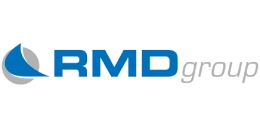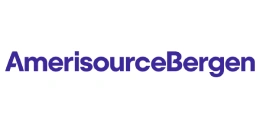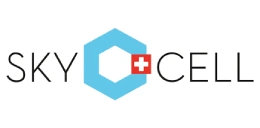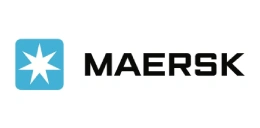Activated Alumina Balls Cost Model: Tracking Efficiency and Market Viability
_11zon.webp)
Activated alumina balls are porous, granular, and spherical materials consisting of aluminum oxide (Al2O3). They possess a large surface area, high adsorbing capacity, and excellent resistance to thermal shock and abrasion. Manufactured by the controlled dehydroxylation of aluminum hydroxide, activated alumina balls are chemically inert, non-toxic, and possess excellent water and polar molecule affinity. Due to such features, they find extensive applications as desiccants, adsorbents, and catalysts. In industrial operations, they are useful for drying gases and liquids in processes, eliminating fluoride, arsenic, and selenium ions from water, and as a catalyst carrier in petrochemical refining applications. Their spherical shape provides higher packing density and flow characteristics, which make them useful for efficient utilization in fixed-bed adsorption systems. Activated alumina balls are also reusable upon thermal regenerations, making them economical and environmentally friendly. In the future, with industries striving to make processes cleaner and more efficient water treatment technologies, activated alumina balls will have an even more essential role to play in facilitating environmental compliance and industrial sustainability. The global activated alumina market size reached USD 1.10 Billion in 2024. According to IMARC Group, the market is projected to reach USD 1.63 Billion by 2033, at a projected CAGR of 4.1% during 2025-2033. Activated alumina balls' market is mostly stimulated by escalating demand for clean water solutions. Their application in defluorination and arsenic removal is paramount in municipal and industrial water treatment, particularly in areas with groundwater pollution. The petrochemical and chemical sectors are the other significant drivers, wherein activated alumina is used on a large scale as a catalyst and catalyst support in hydrogen peroxide production, refining, and polymerization processes. The gas drying industry, which includes natural gas processing as well as compressed air systems, provides consistent demand owing to the high desiccant qualities of the material. Future trends involve increasing use of activated alumina in lithium refining for battery-grade lithium production and in high-end catalytic uses for green hydrogen production. Sustainability drivers are their recyclability through regeneration, low environmental toxicity, and assistance with minimizing harmful contaminants. Industry response has been aggressive, with investments in higher annual production capacity plants, novel formulations with improved adsorption kinetics, and collaboration with water utilities to grow application in developing economies. Despite this, threats exist in terms of competition from other adsorbents such as silica gel and zeolites, and volatility in prices of aluminum raw materials. Generally, the market outlook is positive with high complementarity to clean water globally and sustainable industrial processes.
Trending Insights on Activated Alumina Balls: Latest News and Developments
- In April 2025, Axens finished expanding its Axens Catalyst Arabia Limited facility to include the site's historical catalyst hydroprocessing manufacturing capabilities as well as the newest Tail Gas Treatment Catalysts for local and regional partners. In the Middle East and Saudi Arabia, Axens is currently the only business producing tail gas treatment catalysis for the oil and gas industry. This promotes the geographical accessibility of alumina-based adsorbents for use in refining and gas applications.
- In June 2024, J.M. Huber Corporation announced that it has successfully acquired Jurassic Holdings Corp. and its subsidiaries, including Active Minerals International, LLC, from Golden Gate Capital through its subsidiary Huber Engineered Materials, LLC. As part of the Huber portfolio, AMI is now a part of the Huber Speciality Minerals business unit within HEM, a specialised materials manufacturing firm.
Case Study on Cost Model of Activated Alumina Balls Manufacturing Plant
One of our clients reached out to us to conduct a feasibility study for setting up a medium scale activated alumina balls manufacturing plant. We developed a comprehensive financial model for the setup and operation of a proposed activated alumina balls manufacturing plant in India. This plant is designed to produce 1,500 tons of activated alumina balls annually.
Manufacturing Process: The production of activated alumina balls entails several controlled processes. Production starts with raw aluminum hydroxide procurement, which is then calcined with care at temperatures between 300°C to 600°C to partially dehydroxylate the substance without destroying its porosity. The resulting intermediate alumina is then milled and mixed with binders to facilitate spherical formation. Pelletizing or spray granulation methods are employed to create uniform spherical balls, which are then dried to eliminate remaining moisture. Such green spheres are further subjected to controlled thermal activation in rotary or shaft kilns at elevated temperatures (400°C–900°C) in order to increase porosity and surface area. Intermediate treatments, including impregnation with certain catalysts, may be done based on the final application. After activation, the balls undergo cooling and extreme quality control analysis in the form of surface area analysis (BET), pore volume, mechanical strength, and adsorption capacity. The final balls are sifted to standardized sizes and packaged in moisture-sealed bags or drums to avoid premature hydration during storage and transport. End-use products are applied in desiccant systems, water defluorination, refinery catalytic operations, and gas purification systems.
_11zon.webp)
Raw Material Required:
The basic raw materials required for manufacturing activated alumina balls include aluminium precursors and additives that support shaping and activation. Key raw materials include:
- Aluminium Hydroxide
- Catalyst
- Sodium Hydroxide
- Nitric Acid
- Binding Agent
Machineries Required:
- Raw Material Hopper / Feeder
- Ball Mill / Grinder
- High-Shear Mixer / Slurry Mixer
- Chemical Dosing System
- Alumina Sol Tank
- Dropping Equipment / Nozzle
- Spherical Gel Formation Tank
- Washing & Neutralization Tank
- Extruder
- Pellet Cutter
- Spheronizer
- Fluidized Bed Dryer
- Rotary Dryer
- Rotary Kiln / Shaft Kiln / Continuous Belt Calciner
- Gas or Oil-fired Burner System
- Temperature & Atmosphere Control System
- Vibrating Screen / Rotary Screen
- Air Classifier
- Magnetic Separator
- Impregnation Tank with Agitator
- Drying Equipment
- Automatic Bagging Machine
- FIBC Jumbo Bag Filling System
- Sealing & Labeling Equipment
Techno-Commercial Parameter:
- Capital Investment (CapEx): Setting up an activated alumina ball plant entails huge initial capital investment on various segments. Land acquisition and building of production facilities, such as calcination kilns, pelletizing plants, and drying units, constitute the largest cost items. Purchase of machinery includes grinders, mixers, pelletizers, rotary kilns, cooling systems, and packaging machinery. Installation and commissioning costs involve automation integration for uniform shaping, size grading, and quality checks. There needs to be more investment in laboratory space for adsorption performance testing, utilities like boilers, power generation equipment, and water treatment. Environmental controls like dust collection, air pollution abatement, and effluent treatment are a fundamental part of CapEx to meet regulatory standards. Storage infrastructure, material handling infrastructure, and logistics infrastructure are also imperative. In sum, CapEx facilitates the creation of a strong, compliant, and cost-effective production facility to serve varying industrial customers.
- Operating Expenditure (OpEx): Operating cost in an activated alumina ball factory is characterized by raw material purchases, mainly aluminum hydroxide, which take up a high percentage of recurring expenses. Energy use, especially fuel and electricity to power high-temperature calcination and activation, constitutes another essential factor. Labor expenses, such as qualified operators, engineers, and quality assurance staff, are a major contributor to OpEx. Kiln, mixer, and pelletizer equipment maintenance is required to maintain non-stop operations. Consumables like binding agents, packaging materials, and specialty grade catalysts also contribute costs. Logistics costs of raw material sourcing and distribution of finished products within and outside the country constitute a large percentage of operating expenses. Other recurrent costs are wastewater treatment, emissions compliance, insurance, and taxation. Effective heat recycling from kilns and optimization of raw material use can tremendously decrease operating costs and increase profitability.
- Profitability Analysis Year on Year Basis: We assisted our client in developing a detailed cost model, which projects steady growth, with revenue rising throughout the projected period. Moreover, gross profit margins lie between a range of 25-30%, and net profit lie between a range of 10-15% during the income projection years, highlighting strong financial viability and profitability.
Conclusion:
Our financial model for the activated alumina balls manufacturing plant was meticulously developed to meet the client’s objectives, providing an in-depth analysis of production costs, including raw materials, manufacturing, capital expenditure, and operational expenses. By addressing the specific requirements of producing 1,500 tons of activated alumina balls annually, we successfully identified key cost drivers and projected profitability, considering market trends, inflation, and potential fluctuations in raw material prices. This comprehensive financial model equipped the client with valuable insights into strategic decision-making, demonstrating our commitment to delivering high-quality, client-focused solutions that ensure the long-term success of large-scale manufacturing ventures.
IMARC's Financial Model Expertise: Helping Our Clients Explore Industry Economics
IMARC is a global market research company that offers a wide range of services, including market entry and expansion, market entry and opportunity assessment, competitive intelligence and benchmarking, procurement research, pricing and cost research, regulatory approvals and licensing, factory setup, factory auditing, company incorporation, incubation services, recruitment services, and marketing and sales.
Under our factory setup services, we assist our clients in exploring the feasibility of their plants by providing comprehensive financial modeling. Additionally, we offer end-to-end consultation for setting up a plant in India or abroad. Our financial modeling includes an analysis of capital expenditure (CapEx) required to establish the manufacturing facility, covering costs such as land acquisition, building infrastructure, purchasing high-tech production equipment, and installation. Furthermore, the layout and design of the factory significantly influence operational efficiency, energy consumption, and labor productivity, all of which impact long-term operational expenditure (OpEx). So, every parameter is covered in the analysis.
At IMARC, we leverage our comprehensive market research expertise to support companies in every aspect of their business journey, from market entry and expansion to operational efficiency and innovation. By integrating our factory setup services with our deep knowledge of industry dynamics, we empower our clients to not only establish manufacturing facilities but also strategically position themselves in highly competitive markets. Our financial modeling and end-to-end consultation services ensure that clients can explore the feasibility of their plant setups while also gaining insights into competitors' strategies, technological advancements, and regulatory landscapes. This holistic approach enables our clients to make informed decisions, optimize their operations, and align with sustainable practices, ultimately driving long-term success and growth.
Our Clients
Contact Us
Have a question or need assistance?
Please complete the form with your inquiry or reach out to us at
Phone Number
+91-120-433-0800+1-201-971-6302
+44-753-714-6104










